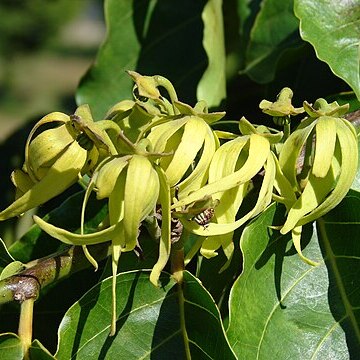Trees with simple indumentum. Flowers large, hermaphrodite, several in racemes on short axillary peduncles; buds elongate. Sepals 3, valvate, somewhat united at the base. Petals 6, in 2 whorls of 3, both valvate, the inner subequal or slightly smaller, linear-lanceolate. Stamens numerous, linear; anthers lateral or subintrorse; connective-appendages distinctly produced and apiculate. Carpels many, free, oblong, with numerous biseriate ovules; styles slender, the stigmas agglutinated to form a disc, each oneclub-shaped with a U-shaped groove which is continued down the inner side of the ovary. Monocarps oblong or ellipsoid, succulent, stipitate. Seeds compressed, pitted.
Medium to tall trees, unarmed, with simple hairs. Flowers bisexual in axillary cymes terminating a branchlet. Sepals valvate in bud, connate at base, reflexed. Petals 6, in 2 similar series, spreading or drooping, free. Stamens linear; connective broad, concealing anther cells and produced into an acute or apiculate cone bearing minute erect emergences. Pollen grains coherent in loose tetrads. Carpels to 15; ovules to 14, biseriate; style slender with clavate stigma; stigmas conglutinated at anthesis. Apocarps indehiscent, stipitate, obloid. Seeds up to 12, transversely compressed.

